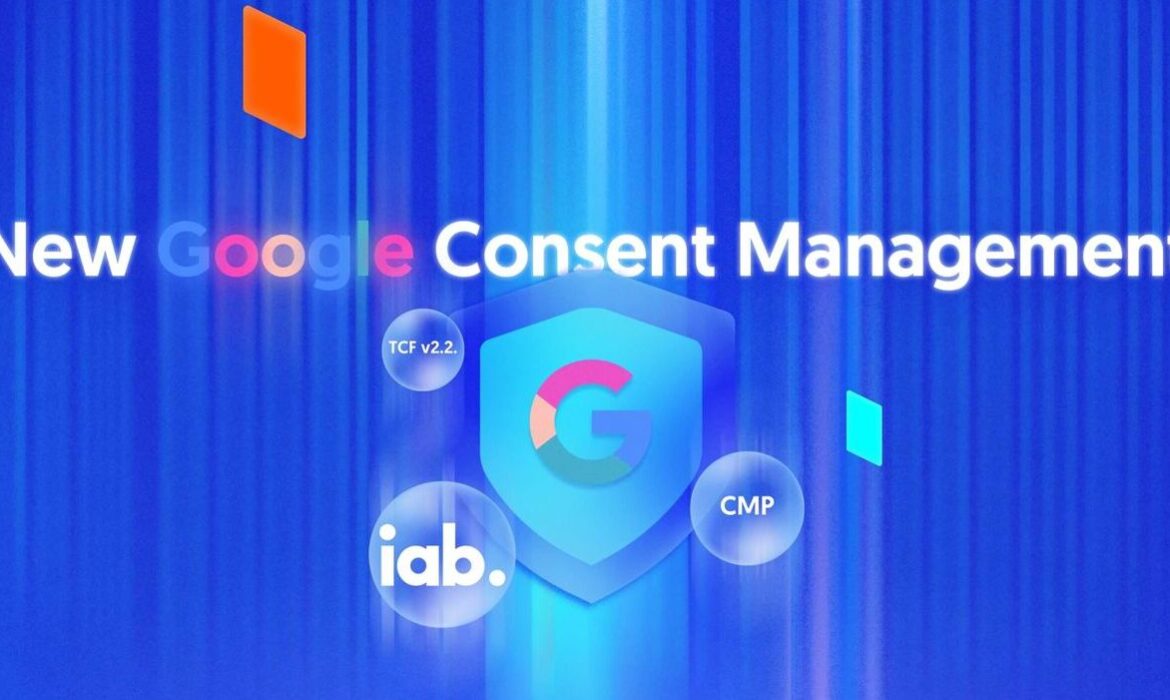Google Unveils Fresh Consent Management Rules for EEA and UK
EEA and UK advertisers and developers who use Google AdSense, Ad Manager, or AdMob for ad serving will need to use the new consent management platforms (CMPs) starting next year. The Transparency and Consent Framework (TCF) of IAB Europe (the Interactive Advertising Bureau) has been incorporated into this platform and received Google certification. Google is always searching for ways to improve consent experiences in order to meet consumer needs and statutory measures. This demonstrates their commitment to transparency and control.
CMPs consent requirements
For CMPs collaborating with its partners who use display ads in the EEA and the UK, Google has implemented a novel rule. Ad Manager and AdMob partners have until January 16, 2024, to adopt the CMP adjustments. Google-approved CMPs evaluate against Google’s certification requirements focusing on TCF compliance. Publishers who fail to comply will face restrictions from delivering ads to EEA and UK audiences. The rule also covers the use of AdSense, Ad Manager, or AdMob. When serving ads, they will have to connect the verified CMP to the TCF.
Google has also stated that traffic from Google-certified CMP will continue to qualify for limited, personalized, and non-personalized (NPA) advertisements. Google will seek authorization for both on-platform and off-platform reconciliation. They further indicated that CTV inventory is not currently subject to CMP regulations.
CMPs that collaborate with its publishing partners. It will keep trying to certify them in accordance with the certification standard. Google thinks the advertising sector can develop a more consistent and trustworthy system for disclosure and consent by embracing IAB Europe’s uniform framework. Additionally, these activities will promote a more security-conscious digital advertising environment and the current advancements in user privacy.
The Transparency & Consent Framework (TCF).
The IAB’s TCF v2.2 is becoming a crucial component in supporting the industry participants, including Google, which is currently restructuring its framework to align with this. It has significantly altered Europe’s data privacy landscape. The TCF is a tool for transparency that depends on standardization. It makes it easier to comply with GDPR and the ePrivacy Directive’s specific requirements. It applies applicable concepts and requirements drawn from EU-level guidelines from the EDPB and national-level guidelines from Data Protection Authorities, to the unique situation of the online industry.
The TCF is an industry-wide voluntary norm placed on technology partners that support the distribution, personalization, or evaluation of advertising and content (third parties or vendors). It aims to assist them to collaborate with publishers of apps and websites (first parties) to offer users a standardized experience when they make privacy choices.
Users have the option to give or withdraw consent as well as exercise their “right to refuse” the processing of personal data through TCF. It contains basic practical standards for educating users, giving them privacy choices, and respecting those choices that are derived from guidelines of Data Protection bodies and the law.
Read More: Antitrust Complaint Filed Against Google in the EU!
What is the EU user consent policy?
According to this policy, advertisers must ensure specific disclaimers and consents are received from end users in the EEA and the UK. This will be done in case they choose to include or use any of the Google products that implement the policy. In the event of non-compliance, usage of Google products may be restricted or suspended, and the agreement may be terminated. The publishers must legally get the end users’ authorization before collecting, distributing, and using personal data for individual advertising. It is also crucial to keep track of the end users’ consent and give them explicit information on how to withdraw their consent.
A quick look at personalized and non-personalized ads
Personalized ads
Previously called interest-based advertising, it is a robust technique that enhances advertising authenticity for users while increasing ROI for advertisers. They enhance both the user and advertiser experience by enabling advertisers to focus their campaigns on user interests. Personalized ads are ads chosen for display based on previously gathered or past data. The user’s past search queries, actions, visits to websites or apps, interests, remarketing, etc are all included in this.
Non-personalized ads
These adverts do not predicate on previous user activity. They focus on users based on relevant data, like basic geo-targeting, the user’s location, web or mobile content, and keywords. NPA uses cookies or mobile ad identifiers for frequency capping, aggregated ad reporting, and contest ad fraud and abuse. One must get consent before using cookies or mobile ad tags as per the ePrivacy Directive in some EEA countries. NPAs will only be provided to users who have signed in with Google in the EEA and shared their age under-age consent set by GDPR.
Read More: Meta Adopts Consent Policy for Targeted Ads Data in Europe


